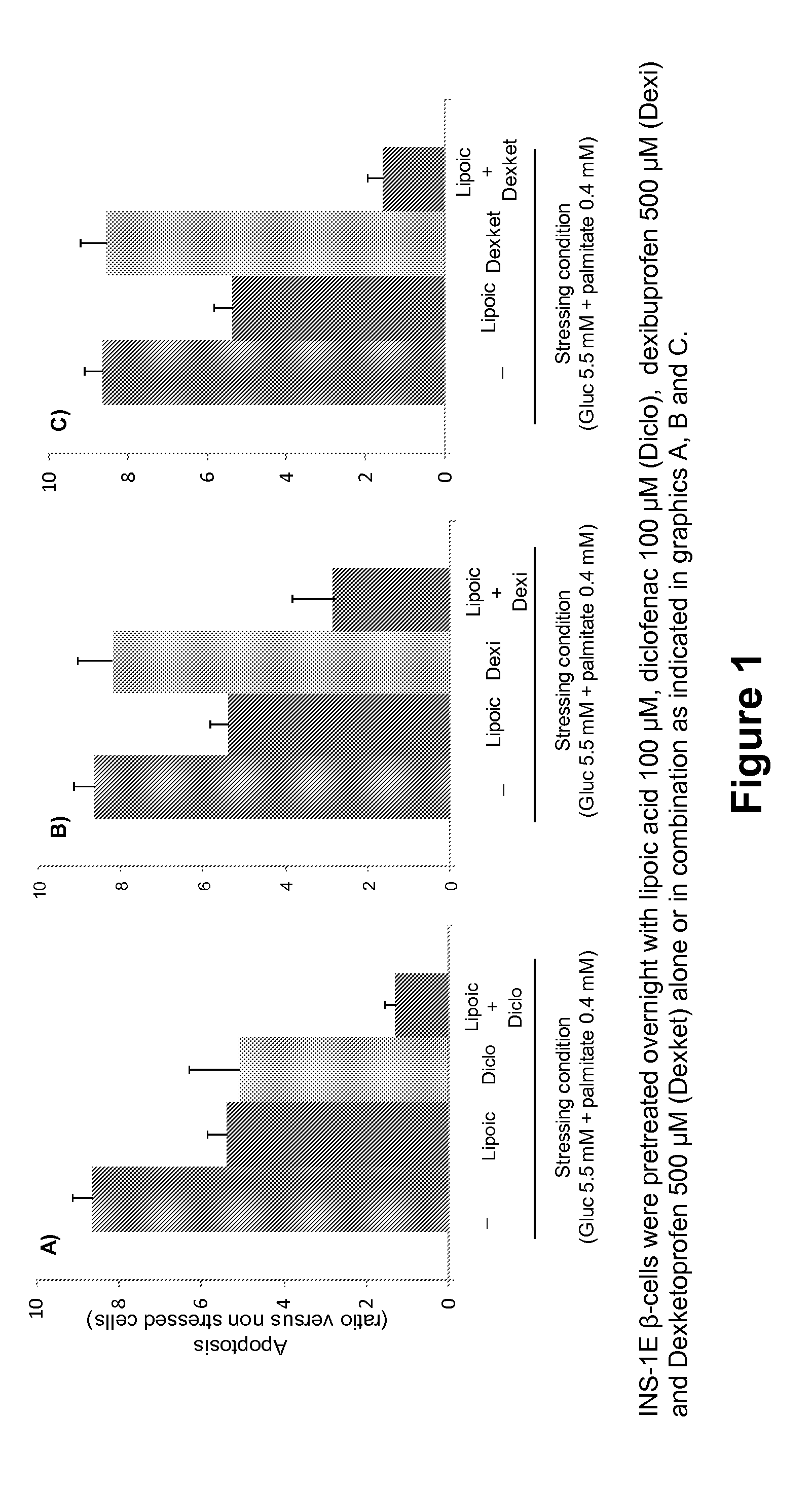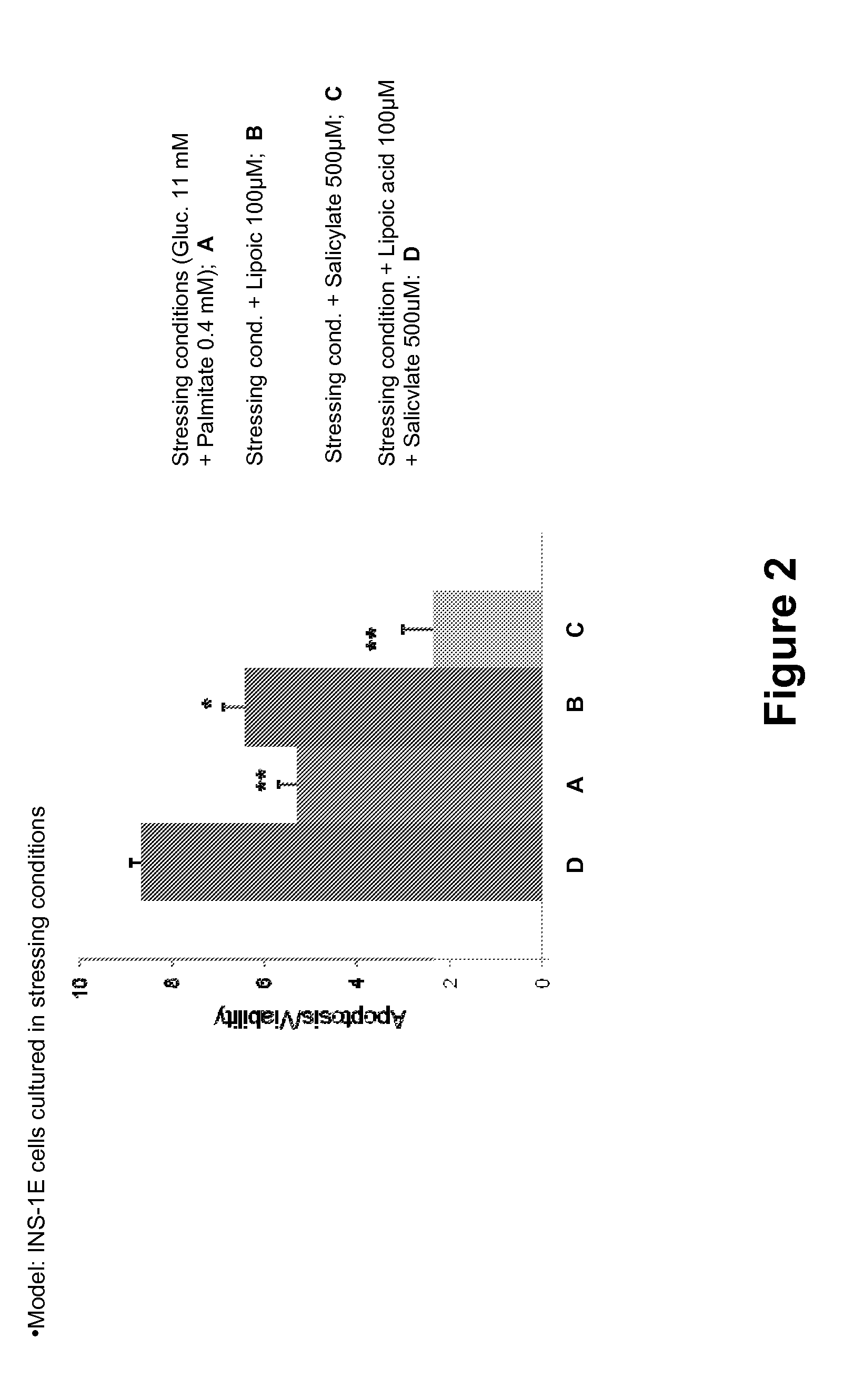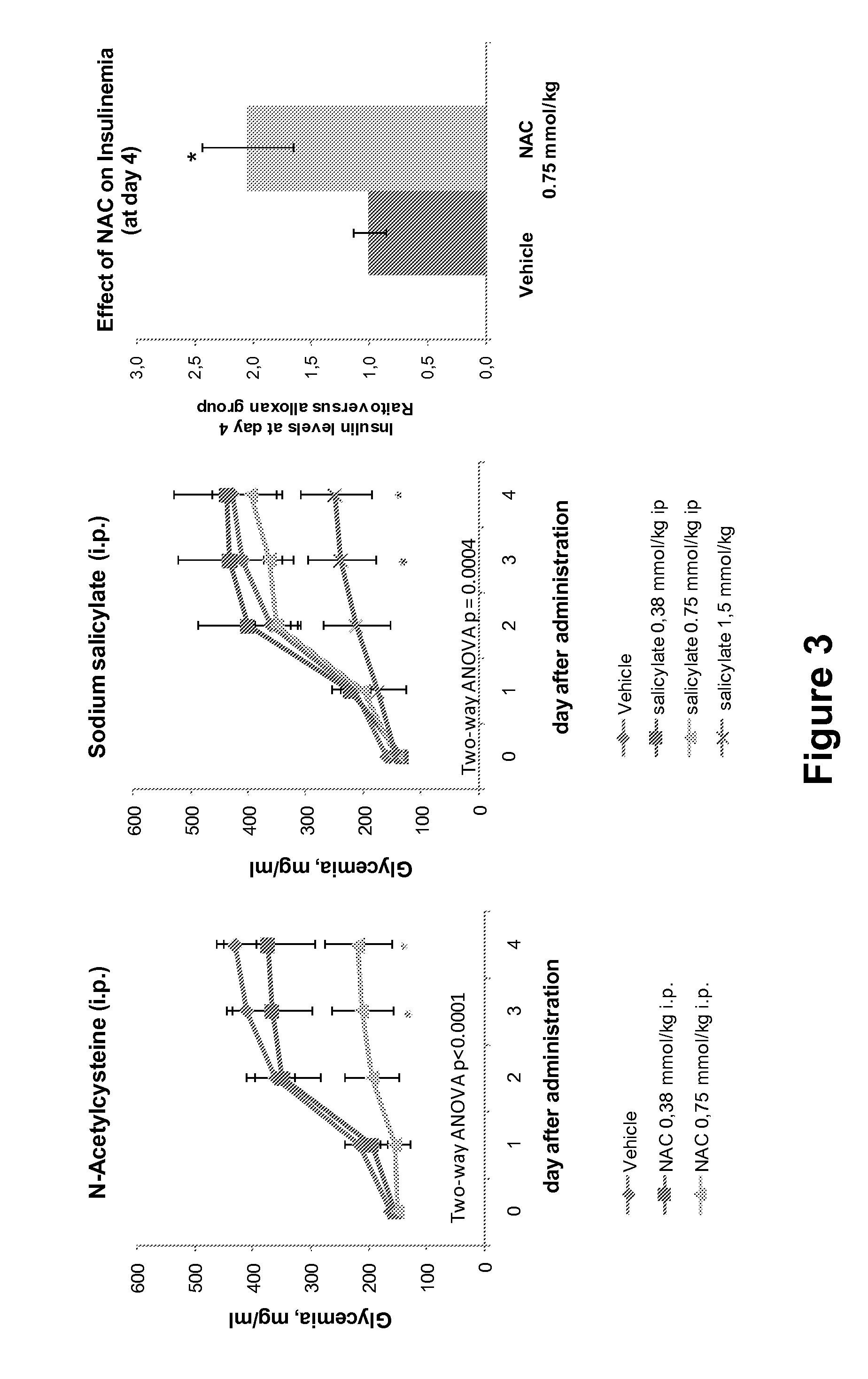Combination Therapies For Treating Metabolic Disorders
a metabolic disorder and combination therapy technology, applied in the field of metabolic disorders, can solve the problems of imposing a high financial burden on health care costs for society, impaired glucose tolerance, damage to pancreatic -cells sensitive to oxidative free radicals, etc., to reduce advanced glycated end products (ages), tissue and/or plasma tnf and il6, prevent impairment or failure of cardiovascular complications, and reduce insulin secretion. , the effect of reducing the number o
- Summary
- Abstract
- Description
- Claims
- Application Information
AI Technical Summary
Benefits of technology
Problems solved by technology
Method used
Image
Examples
example 1
Alloxan Induced Beta Cell Destruction Model
[0195]Male cd-1 mice weighing 25-30 g were purchased from Charles River Laboratories Spain (Sant Cugat del Vallès, Spain). Pancreatic beta cell destruction was induced in the cd-1 mice after 3 hours of fasting by a single intraperitoneal injection of a freshly prepared solution of alloxan 200 mg / kg (Sigma-Aldrich, San Luis, Mo.) that was dissolved in NaCl 0.9%. Single drug intraperitoneal administration was 1 hour before the alloxan administration. Animals received N-acetylcysteine 0.19 mmol / kg alone, Sodium Salicylate 0.75 mmol / kg alone, or the combination of both. The control group was injected with the vehicle, PBS at pH 7.4. Glycemia was measured on arterio-venous blood collected from the tail vessels between 9:00 and 10:00 am on day 0 (day of drug administration) to day 4. The circulating glucose concentration were determined by a rapid glucose analyzer (Accu-Chek Aviva; Roche).
[0196]Statistical comparisons between groups were establis...
example 2
Chronic Treatment of Db / Db Mice
[0197]Eight week old Male mice C57BL / Ks bearing the db / db mutation (The Jackson Laboratories) were purchased from Charles River Laboratories Spain (Sant Cugat del Vallés, Spain). The db / db mice were treated i.p. with N-acetylcysteine alone, sodium salicylate alone, or the combination of N-acetylcysteine and sodium salicylate at 0.75 mmol / kg / day. After 4 weeks of treatment, mice were sacrificed with CO2 euthanasia and blood was extracted from the inferior cave vein and maintained at 4° C. until plasma obtention by centrifugation (13 000 g) for 15 min at 4° C., and stored at −80° C. until use for the measure of plasma triglycerides and nonesterified fatty acids. Plasma triglycerides and nonesterified fatty acids were determined with standard colorimetric methods (Biosystems, Barcelona, Spain, and Wako Chemicals, Neuss, Germany, respectively).
[0198]Statistical comparisons between groups were established by two-way ANOVA using Prism 4 (GraphPad, San Diego,...
PUM
| Property | Measurement | Unit |
|---|---|---|
| time | aaaaa | aaaaa |
| pH | aaaaa | aaaaa |
| temperature | aaaaa | aaaaa |
Abstract
Description
Claims
Application Information
 Login to View More
Login to View More - R&D
- Intellectual Property
- Life Sciences
- Materials
- Tech Scout
- Unparalleled Data Quality
- Higher Quality Content
- 60% Fewer Hallucinations
Browse by: Latest US Patents, China's latest patents, Technical Efficacy Thesaurus, Application Domain, Technology Topic, Popular Technical Reports.
© 2025 PatSnap. All rights reserved.Legal|Privacy policy|Modern Slavery Act Transparency Statement|Sitemap|About US| Contact US: help@patsnap.com



